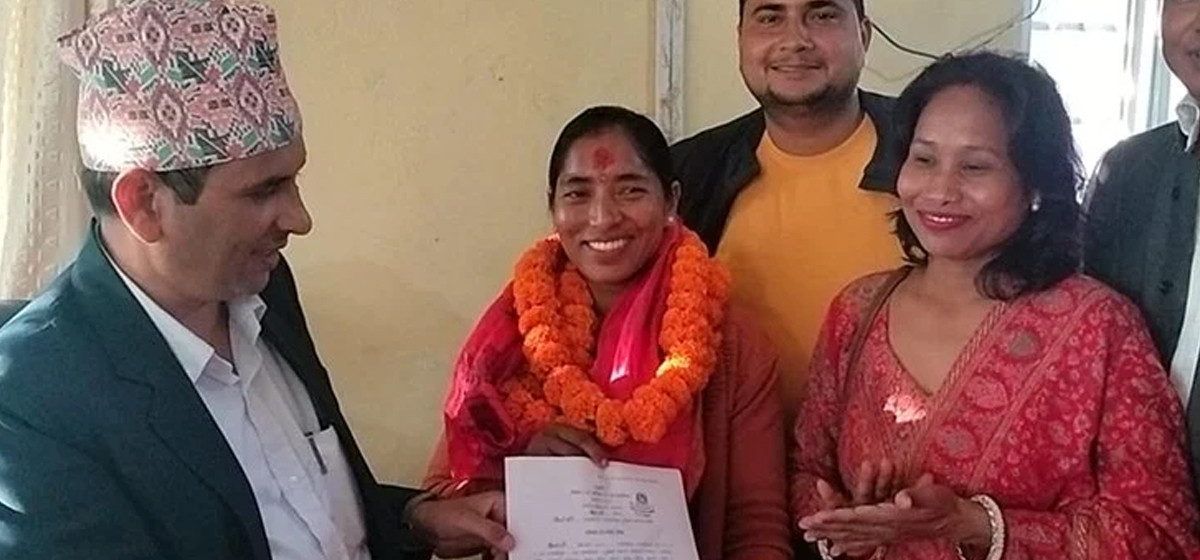Air pollution should be controlled immediately. Otherwise, we will witness huge loss in human resources, production and economic growth
We are accustomed to temporary escape from air pollution by using a paper mask while disregarding its long-term solution. By ignoring the right to breathe clean air we are not only refusing to pay attention to environmental protection but also ultimately to human health and national development. Air pollution is considered as the fifth largest killer in today’s world and Nepal stands at bottom five countries in 2018 Environmental Performance Index. It’s alarming that Kathmandu’s particulate matter (PM) concentration has exceeded World Health Organization (WHO) standard by six times. Now this chronic scenario has extended beyond Kathmandu to cities like Biratnagar, Dharan and Pokhara. Curbing air pollution has become complex when the formulated laws, policy and decision of the court have either not been followed or remain neglected.
Concentration of particulate matter in the air determines the quality of the air and it exists in both solid and liquid particles. Pollutants can stay in the air in the form of dust, smoke, soot and others. PM 2.5, with a diameter of less than 2.5 micrometres, or about one-thirtieth the width of a human hair, easily penetrates deep into our lungs and is thus very harmful to our health. Shockingly, its composition can include heavy metals, carbon, sulfate, and nitrate compounds as well. At present, we have 100 PM concentration. But unfortunately, PM 2.5 has been found in Bhaktapur, where a large number of brick kilns are located. Major drivers of air pollution include factories (especially brick factory), low emission standard vehicles, rising number of private vehicles, haphazard digging of roads and burning of waste and smoke and dust carried out by wind from these sources. It is vital that both the government as well as individuals need to comply with pollution standard to reduce pollution.
Heart to Heart with Malvika

According to the study of Nepal Academy of Science and Technology (NAST) air pollution takes away lives of around 35,000 people every year and causes more deaths every year than with war, murder, tuberculosis, HIV, AIDs and malaria combined. Several other studies have shown that air pollution severely hampers the premature children as it blocks their respiratory process. A recent East Asian study found that air pollution shortens the life of a child by estimated two years. In the developing countries, pollution is the third leading risk factor behind metabolic risks and dietary risks.
It is clear that in the long run pollution is going to severely affect quality of life and wellbeing of humanity, thereby leading to the decline in human resources, productivity and innovation of the country. Air pollution violates our fundamental right to life, health and healthy environment. This is going to affect our tourism industry and economy as well.
The government has placed several air monitoring stations in and outside Kathmandu valley and also brought in broomer machines to control pollution. But it has not been able to phase out 20-year-old vehicles—major contributor of air pollution—from the Valley. We have Nepal Vehicle Mass Emission Standard (2012) and Standard on Emission and Stack Height for Brick Factory (2017) but there is lack of compliance. In 2018, out of 3.2 million vehicles, only 1, 00,000 vehicles (only three percent) went through pollution test. Public Interest Litigation (PIL) is often filed to ensure compliance. Supreme Court banned diesel-based ‘Tempo’ in Kathmandu and outside. But again these verdicts are not implemented strictly and everywhere.
As Kathmandu is surrounded by hills all around, smoke, dust and other particles do not find an outlet to escape. This contributes to haze formation and slower air flow. Nepal has not been able to adhere to right to healthy environment, one of the fundamental rights enshrined in the constitution.
There is an immediate need to address this problem. Otherwise, we will witness huge loss in human resources, production and economic growth. The state collects around 460 million rupees from petrol and diesel-run vehicles for pollution control. This money has not been properly used for that purpose. The government must intervene, if necessary, to control pollution.
Department of Environment and Forest, Department of Transportation, Department of Roads and other line agencies should work in coordination for raising awareness and implementing pollution control programs effectively.
Pollution is no more a national issue. Pollution in Nepal affects India and China and vice-versa. Thus regional cooperation is equally vital to fight pollution collectively. It’s the government’s obligation to issue policy, directives and provide needed manpower and resources as well as fine and punish those who flout laws. Since it affects everyone, all need to stand together to control corruption and ensure health of the citizens and the country.
The authors are BALLB students at Kathmandu School of Law





































